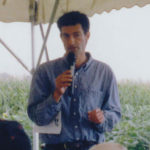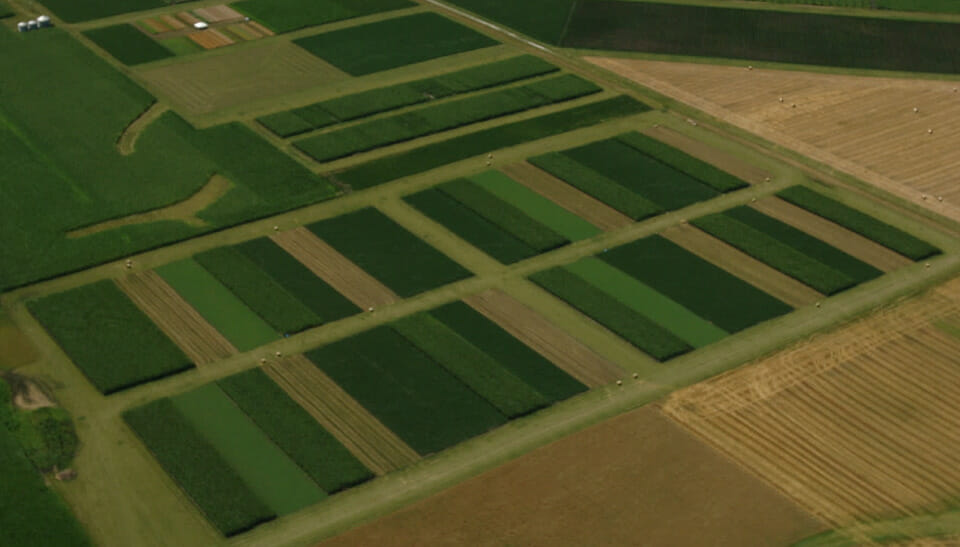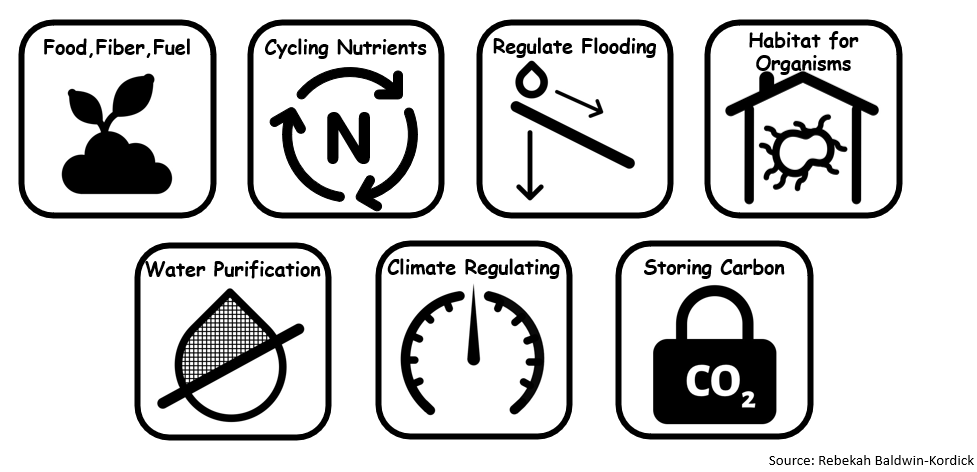Research Connects Soil Health Principles, Ecosystem Services and Climate Resiliency to Extended Rotations
Summer is about to begin and as a new season is on the horizon, it is time to revisit a shared learning call from the depths of winter hosted by Marshall McDaniel, associate professor in soil-plant interactions at Iowa State University. Marshall shared about past, current and future research done with extended rotations on ISU’s Marsden Research Farm.
Iowa State professor emeritus and PFI board member, Matt Liebman, who began the Marsden farm research in 2002, also contributed to the call and fielded questions from farmers across the state.
“Marsden farm is a long-term investigation of how cropping system diversification and crop-livestock integration affects sustainability. What I think is different from a lot of other long-term experiments out there is that Matt, and now myself, try to conduct research that’s relevant to Iowa farmers.”
-Marshall McDaniel
The Marsden “Agroecosystem Diversification Experiment” has followed 3 cropping systems for over 20 years: a 2-year (corn and soybean) rotation, a 3-year (corn, soybeans, oats + red clover) rotation and a 4-year (corn, soybeans, oats + alfalfa, alfalfa) rotation. The decades-long data collection tracks and compares profitability, input reduction, soil erosion and various soil health characteristics. A recent study focused on soil health parameters that affect crop growth – like soil bulk density, cation exchange capacity and soil resistance. The study also measured the abundance and activity of soil microbes.
Future research will look to two new questions: 1) do these benefits of the extended rotation translate to more climate resilient soybean growth (Funded by Iowa Soybean Association), and 2) does ‘stacking’ more conservation practices into the 4-year rotation provide even more soil health benefits. More specifically, will adding cover crops and converting to no-tillage improve soil health even further? Marshall and colleagues will find out!
Ecosystem Services and Soil Health Principles in a Diversified Perennial Cropping System
Marshall connected the rotation data from Marsden farm to an existing Food and Agriculture Organization of the United Nations matrix of ecosystem services derived from soils (or Soil Ecosystem Services). Of their original list of 11 ecosystem services, Marshall identified 7 key services that are delivered with their 4-year rotation that tie back to soil characteristics they measured.
“When I talk about soil health, I like to express it as: ‘soil health is the functional capacity of soils to perform soil ecosystem services.’ These are the benefits that soils bring to humans and the rest of life on Earth,” said Marshall. Connecting soil health to ecosystems services – and in the field, soil health-promoting practices to measurable soil health characteristics – can help us begin to see the value of soil health practices with a new lens.
Marshall then connected 4-year rotations to the soil health principles outlined by the NRCS which are actionable, tangible practices that support ecosystem services.
| NRCS Soil Health Principles | Marsden Farm Practices |
| Soil Armor | Perennial Crops & Coming Soon: Cover Crops |
| Reduce Disturbance | New in 2020: No-till |
| Plant Diversity | Extended Crop Rotations |
| Continual Live Root | Perennial Crops & Relay Crops |
| Livestock Integration | Pastures, Adding Manure |
While it is difficult to attribute monetary value to these ecosystem services, the net revenue and cost reduction between the 2-year and 4-year systems was measured from the beginning of the experiment. Profitability of the systems did not differ between the 2-year and 4-year rotations. Input costs, specifically synthetic nitrogen, herbicides and fossil fuel energy, were lower in the 4-year rotation. The 4-year rotation also decreases nitrate concentration in the soil- water and reduces soil erosion. Other soil health characteristics were measured and reported, and new practices will continue to be measured and identified as potential mitigations to climate and weather extremes.
Climate Resiliency
Slater, Iowa, farmer Lee Tesdell attended the call and asked: “I’m trying to make my farm more climate resilient; what would be the top three practices that you would recommend?”
Marshall replied, “Anything that increases organic matter improves soil porosity and soil water holding capacity. The big problem is that we’ve got too much water in the spring and then the same year we don’t have enough water later in the growing season. Soil organic matter not only holds more water itself, but when you increase it, the structure of the soil tends to change and it can hold more water, making it more resilient.”
What are the next steps for Marshall and his team at Marsden Farm? They want to push the 4-year rotation to achieve stable yields under more extreme weather scenarios, and to integrate additional soil health practices like no-till and cereal rye cover crops, measuring each change and step along the way.




